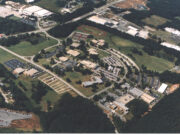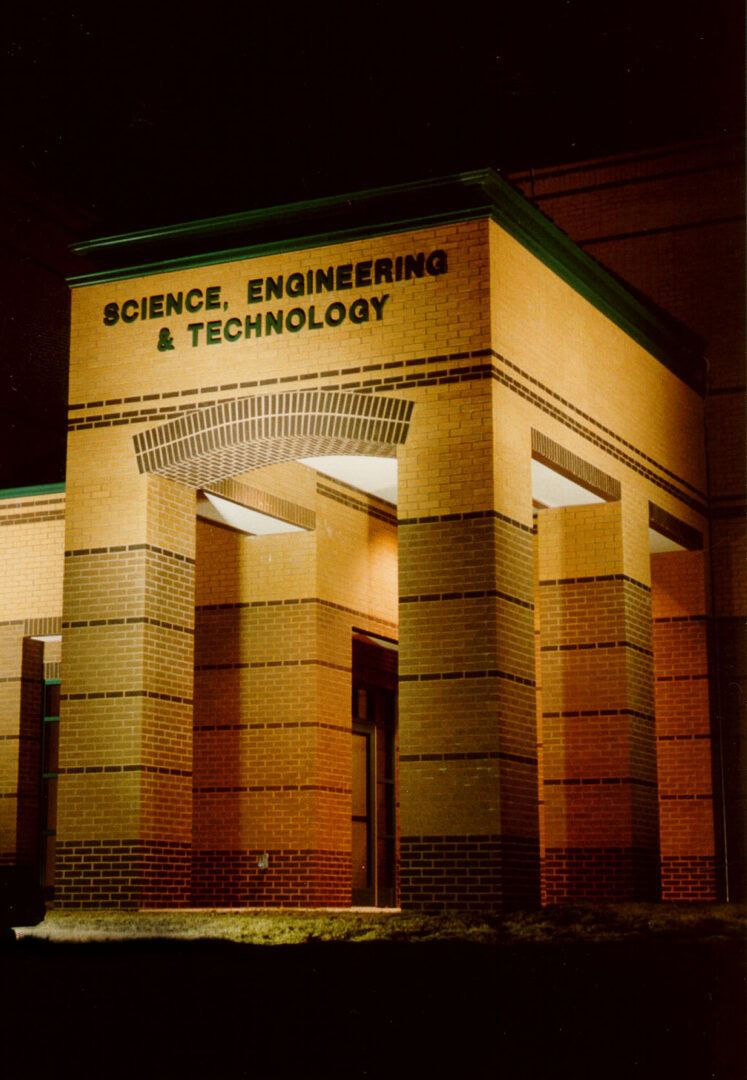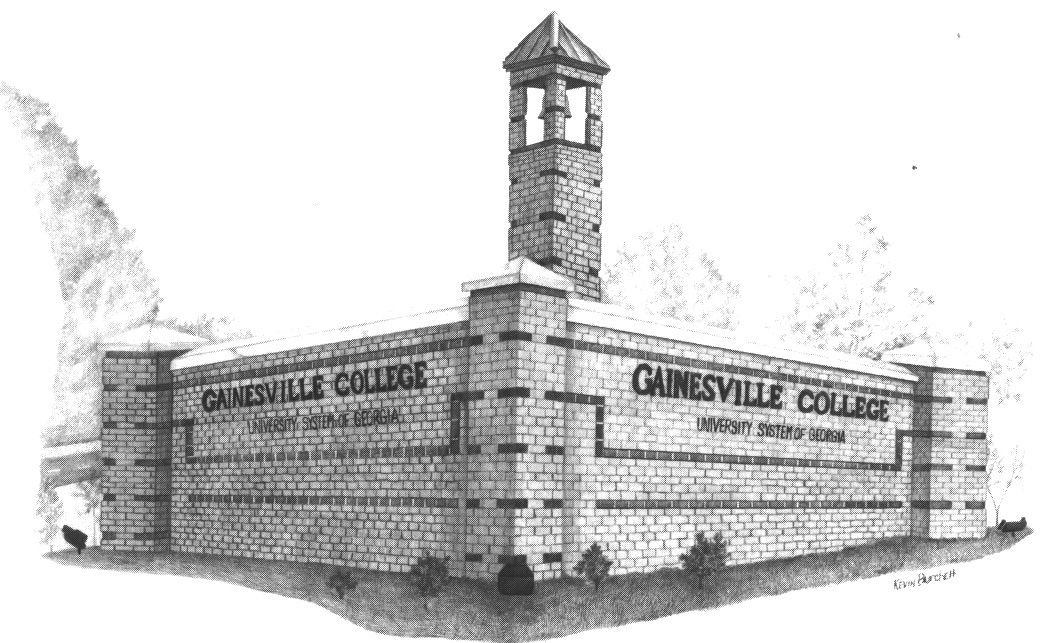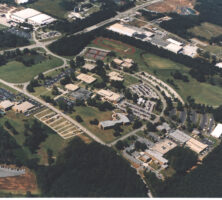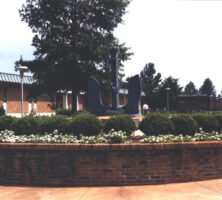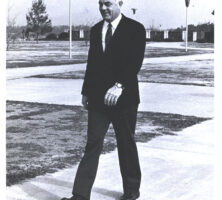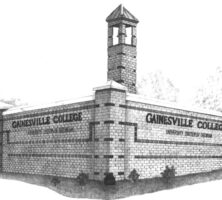Note from the Editors: In January 2013 Gainesville State College merged with North Georgia College and State University to form the University of North Georgia. This article chronicles the history of Gainesville State from its founding until the time of the merger.
Founded in 1964, Gainesville State College is the only publicly supported two-year college in northeast Georgia. Consequently, it has long served as a critical point of access to higher education for both young people and adults residing in the area northeast of Atlanta. A product of the postwar junior-college movement in Georgia, Gainesville State College has worked to enhance educational opportunity for rural and small-town Georgians, citizens for whom postsecondary education had once been unobtainable in their home communities.
Mission
The mission of Gainesville State College has been to provide northeast Georgia students with a broad liberal arts education as well as career programming, including core courses for the associate degree and a full transfer program for those pursuing baccalaureate degrees. In addition, the institution fulfills an important outreach function, which incorporates service to its host community, cultural enrichment, and extensive continuing education for both personal growth and career advancement. Finally, the college prepares students for participation in a global society, with emphasis on the respect for cultural and social diversity that is essential to modern citizenship.
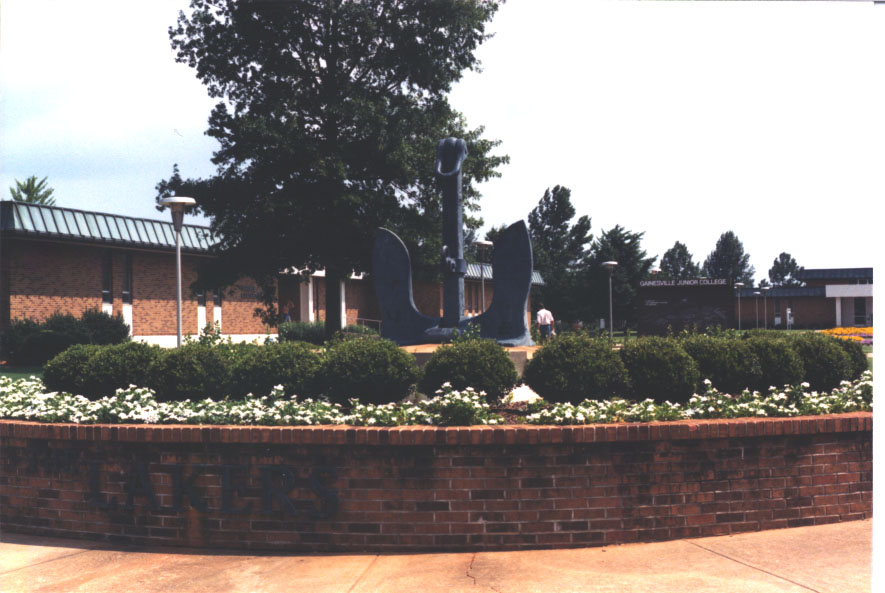
Courtesy of Gainesville State College
History
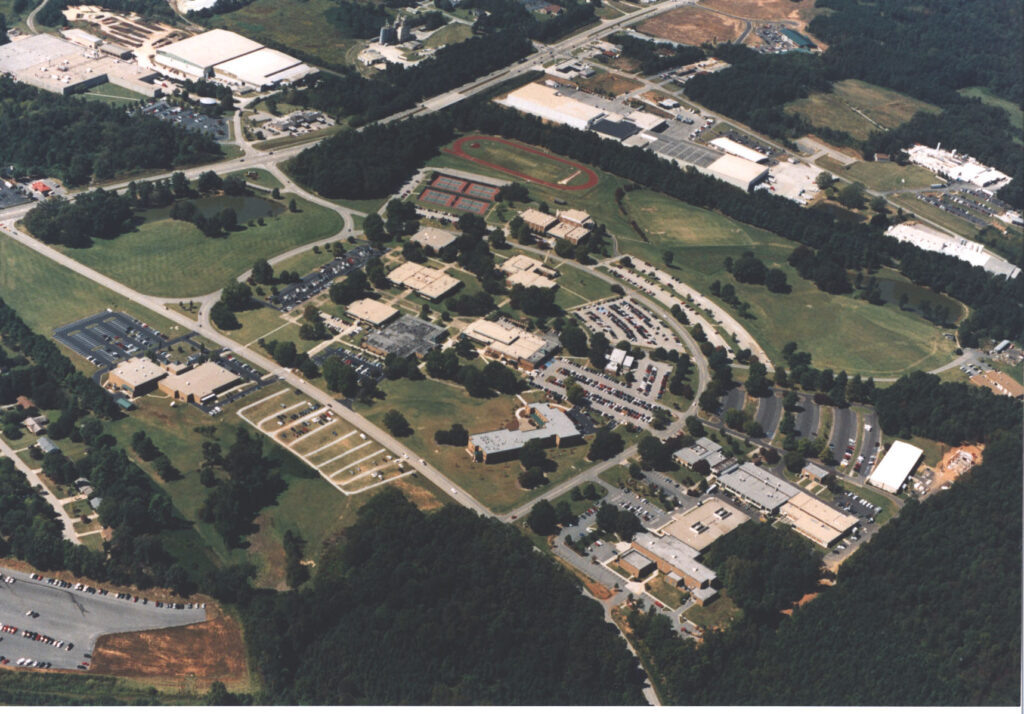
Courtesy of Gainesville State College
While the Gainesville–Hall County area has long functioned as an agricultural, commercial, and financial center for northeast Georgia, as late as the 1950s it lacked a public higher educational institution to meet the escalating demands of a community experiencing rapid economic and demographic growth. This dearth of educational opportunity became a more urgent problem as economic development and property values soared after the creation of Lake Lanier, which officially opened in 1957. As the regional economy diversified, both liberal arts education and vocational training assumed greater significance for employers and the local labor force.
As a result of the task force’s work, a broad consensus developed in favor of a community college. In March 1964 the regents received a formal application for the establishment of a junior college in the Gainesville area, which included a guarantee of $2 million in bonding to cover all initial construction costs, plus sufficient funding for the development of a technical school adjoining the college campus. In fall 1966, only two years after the regents accepted this petition, the first class entered Gainesville Junior College.
Growth over Time
During the years since its founding, Gainesville State College has grown well beyond the projections. Starting with the first class, enrollment has consistently exceeded expectations, from the initial 419 students to 4,160 students in spring 2003. The college continues to experience explosive growth, including increases of 13 percent in 2001 and 12.8 percent in 2002. These increases have been matched and aided by a significant acceleration of the activity of the Gainesville College Foundation. The foundation, one of the most active among Georgia’s thirteen state-supported community colleges, in 2001-2 awarded $291,000 to 427 students.
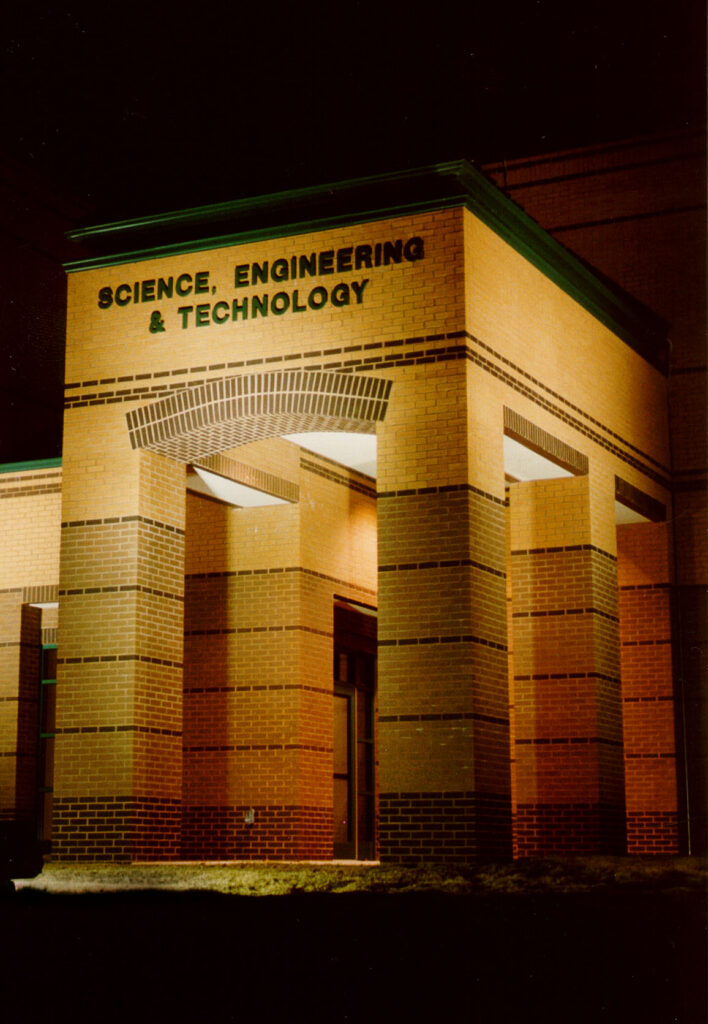
Courtesy of Gainesville State College
This steady growth reflects the closeness of the longstanding relationship between Gainesville State College and the people of northeast Georgia. From the earliest years under the leadership of its first president, Hugh M. Mills Jr., the college has enjoyed the enthusiastic support of the citizens it serves. Through collaboration with its foundation and local advisory bodies, the institution has consistently worked to meet the changing needs of changing communities. In 1979 the Hall County arts community was well served by the creation of the Gainesville Theatre Alliance, which united theater programs from Gainesville Junior College, Brenau University, and local drama groups.
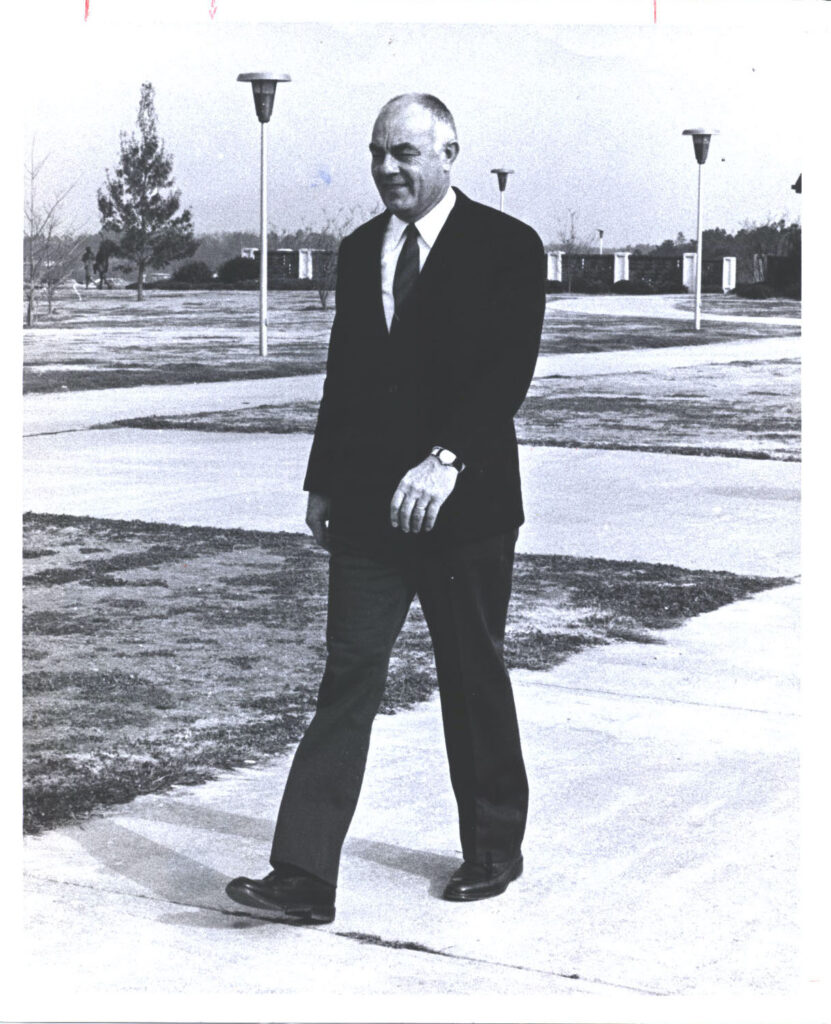
Courtesy of Gainesville State College
Intent on building the instructional program, the Mills administration sometimes struggled, as in its efforts in 1972 to respond to the forty suggestions made in the first Southern Association of Colleges and Schools (SACS) accreditation exercise; but by 1983 these early problems had been solved and the academic program operated smoothly. As a result of Mills’s work to establish a student-centered curriculum that would meet the developmental needs of sometimes poorly prepared undergraduates, further SACS evaluations produced less anxiety and strong endorsements of the academic program.
The subsequent administration of J. Foster Watkins was marked by dramatic campus growth, including the addition of the first new campus buildings since 1974, the initiation of the first four-year degree programming (in the field of business administration) through North Georgia College (later North Georgia College and State University), the expansion of the Gainesville Theatre Alliance, and the renaming of the institution from Gainesville Junior College to Gainesville College in 1987. By the end of Watkins’s tenure as president in 1997, the successful Gainesville College Foundation had also built an endowment of $4 million, the largest of any two-year college in Georgia. In 2000 the endowment stood at nearly $8 million.
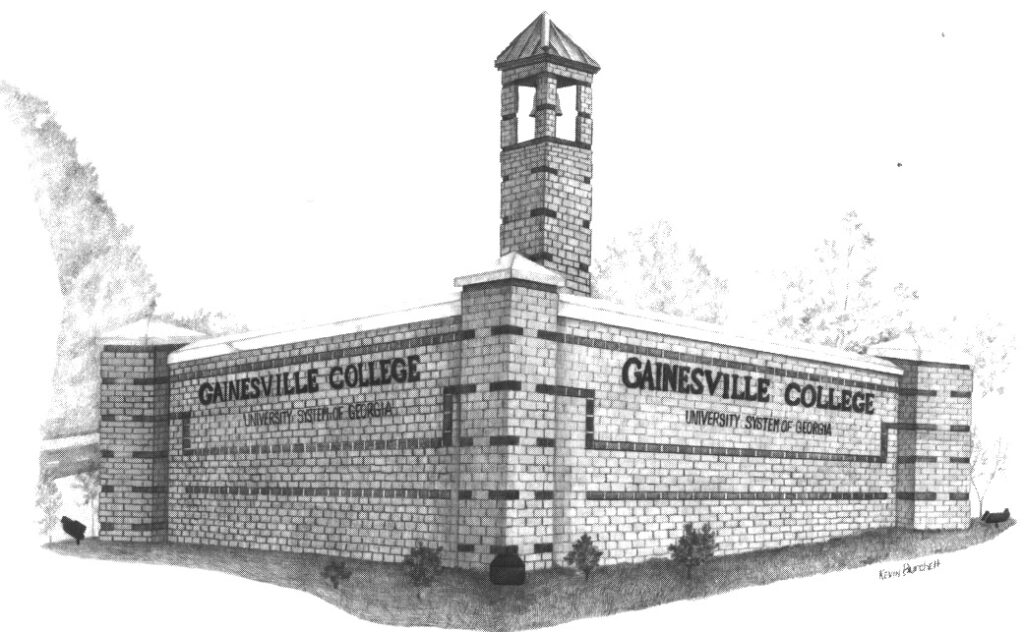
Courtesy of Gainesville State College
The presidency of Martha Tovell Nesbitt has witnessed major changes in the college’s programs and outreach, as well as steady enrollment increases. Since 1997 the school has established successful satellite campuses in Forsyth County and in Watkinsville, each of them the site of significant growth. The Board of Regents has approved the Institute of Environmental and Spatial Analysis, a collaborative program with North Georgia College and State University and the University of Georgia. Designed to develop a better understanding of the Chattahoochee River basin, the institute is supported by Gainesville State College’s growing emphasis on environmental studies. In 2002 the college again responded to the changing needs and growing diversity of Hall County by accepting a $634,100 grant from the Goizueta Foundation to expand educational opportunity to the rapidly growing Hispanic population of northeast Georgia.
In 2005 the name of the institution changed to Gainesville State College, and plans to offer several four-year degree programs beginning in fall 2006 were announced.
Today, as in the 1960s, the heart of the Gainesville State College mission involves the expansion of educational opportunity to better serve northeast Georgians, especially those from disadvantaged and emerging populations seeking self-improvement and entry into the company of educated people.


